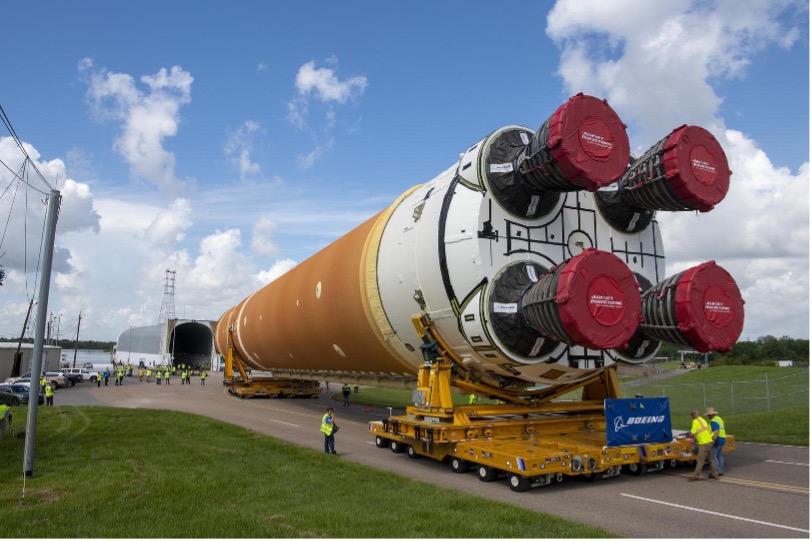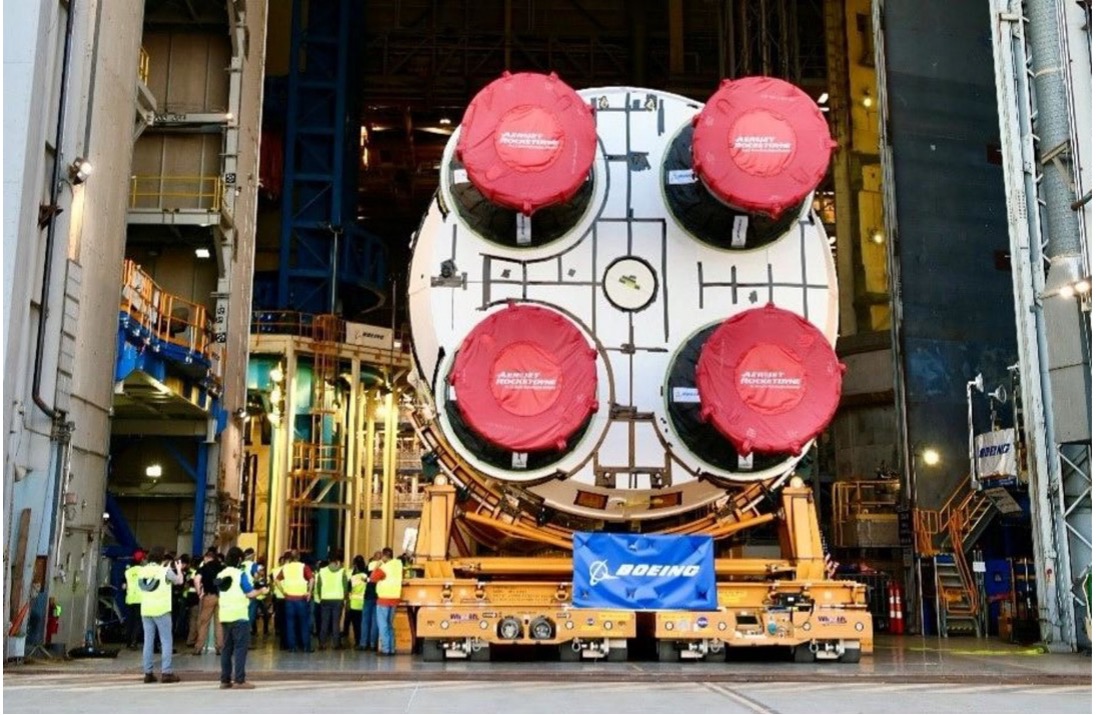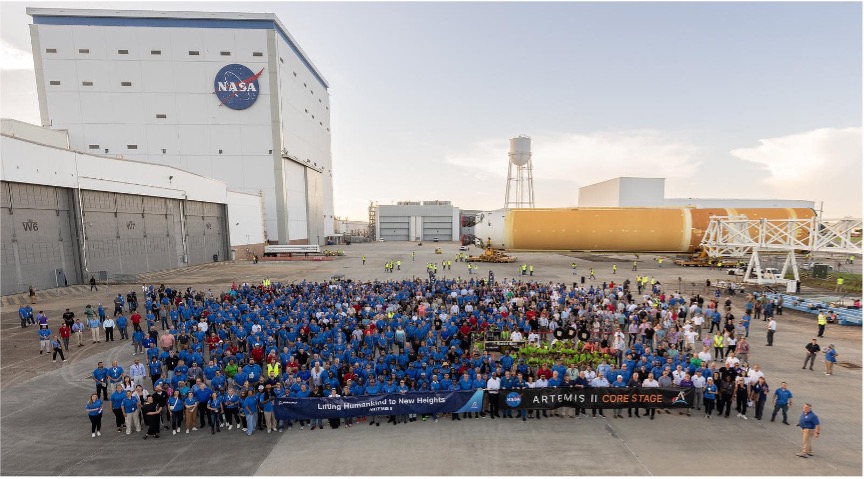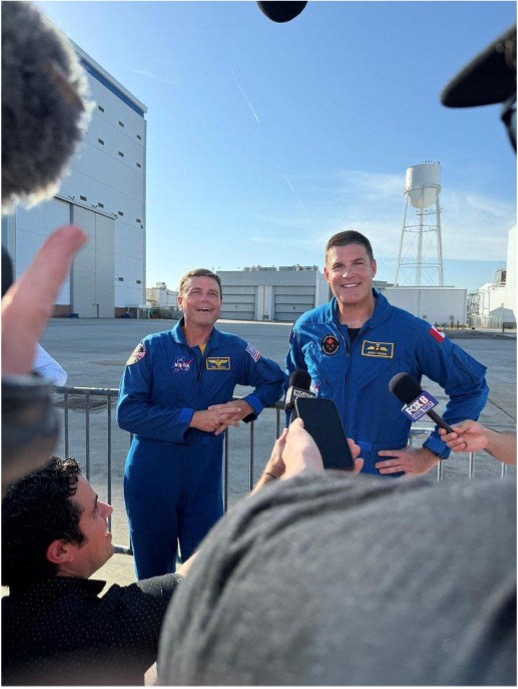Rolling delivery: Moon rocket makes a big move
Completion of rollout marks Boeing’s delivery of second Artemis core stage to NASA.
 Above: The Boeing-built core stage for Artemis II mission makes its way to the NASA's Pegasus barge for transport to Kennedy Space Center. (Boeing/Liz Morrell photo)
Above: The Boeing-built core stage for Artemis II mission makes its way to the NASA's Pegasus barge for transport to Kennedy Space Center. (Boeing/Liz Morrell photo)
Boeing successfully rolled out the Space Launch System (SLS) Core Stage 2 (CS2) to NASA, a major milestone in the agency’s Artemis campaign that aims to return astronauts to the moon.
Why it matters: This core stage will power the Artemis II mission and carry the first woman and person of color to lunar orbit no earlier than September 2025. Zoom in: Meticulous planning has been dedicated to ensuring the utmost care for 'their ride.' Preparing to move the largest stage ever built for NASA's moon rocket was no easy task.
“Thousands of people across Boeing have contributed to the design, development, build and test of this rocket, and this moment belongs to all of us,” says Dave Dutcher, vice president and program manager for Boeing’s Space Launch System program. “Together, we are building the world's most capable rocket, paving the way for future generations to reach new frontiers. It is our responsibility to ensure we’re providing a high-quality vehicle for Reid Wiseman, Victor Glover, Christina Koch and Jeremy Hansen. As the Artemis II crew, their journey to lunar orbit will be a historic milestone, and we must ensure their safety and well-being throughout the mission.”
 Shots of Core Stage 2 as it was rolled out of the assembly building and rolled to NASA's Pegasus barge. (Boeing/Liz Morrell photos)
Shots of Core Stage 2 as it was rolled out of the assembly building and rolled to NASA's Pegasus barge. (Boeing/Liz Morrell photos)
Donned in Boeing-blue, Boeing employees cheered as the core stage began its 1.4 mile (2.25 km) journey from the assembly facility to the historic Pegasus barge alongside NASA, industry partners and suppliers. Once loaded, the barge will embark on a 900-mile (1448.41 km) journey to NASA’s Kennedy Space Center in Cape Canaveral, Florida.
 Boeing teammates plus NASA and other partners take a “family photo” with the Artemis II core stage as it rolls away from the assembly building at NASA's Michoud Assembly Facility in New Orleans, Louisiana. (NASA photo)
Boeing teammates plus NASA and other partners take a “family photo” with the Artemis II core stage as it rolls away from the assembly building at NASA's Michoud Assembly Facility in New Orleans, Louisiana. (NASA photo)
"The road to space goes through New Orleans, where Michoud has been America's rocket factory for more than 60 years,” added Dutcher. “Boeing-built products helped land humankind on the moon in 1969, and we’re proud to continue that legacy through the Artemis generation.”
 Astronauts to Boeing: "Thank you and we will take good care of your baby." Commander Reid Wiseman, joined by Mission Specialist Jeremy Hansen, expressed his gratitude for Boeing's workforce at the Michoud Assembly Facility during remarks at the rollout event. (Boeing/Sam Tobio photo)
Astronauts to Boeing: "Thank you and we will take good care of your baby." Commander Reid Wiseman, joined by Mission Specialist Jeremy Hansen, expressed his gratitude for Boeing's workforce at the Michoud Assembly Facility during remarks at the rollout event. (Boeing/Sam Tobio photo)
What’s next: Once in Florida, the core stage will be integrated with the upper stage, boosters, and NASA’s Orion spacecraft.
NASA’s Space Launch System (SLS) rocket – the nation’s next-generation, super heavy-lift rocket – will enable NASA’s Artemis program and will carry people and cargo to the moon, Mars and beyond. Boeing was selected by NASA to design, develop, test and produce the core stages, upper stages, and avionics suite for the SLS fleet of rockets. The first SLS rocket – featuring the Boeing-built core stage – successfully launched at 1:47 AM ET on November 16, 2022, as part of the Artemis I Mission. Production is currently underway for the Boeing-built core stages, upper stages (including Exploration Upper Stage) and avionics for future Artemis missions. Learn more about the SLS.





